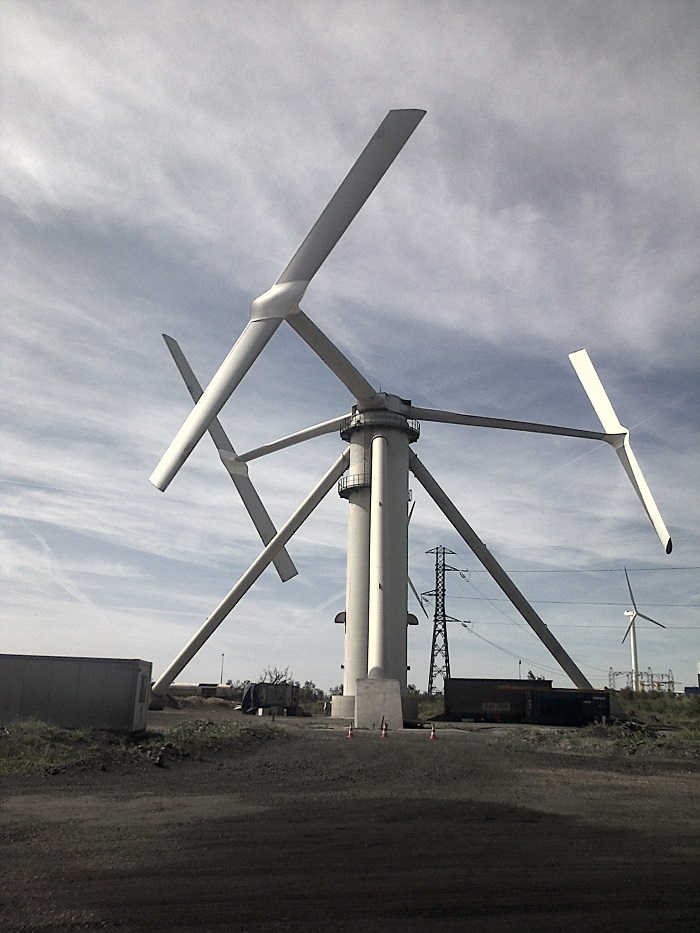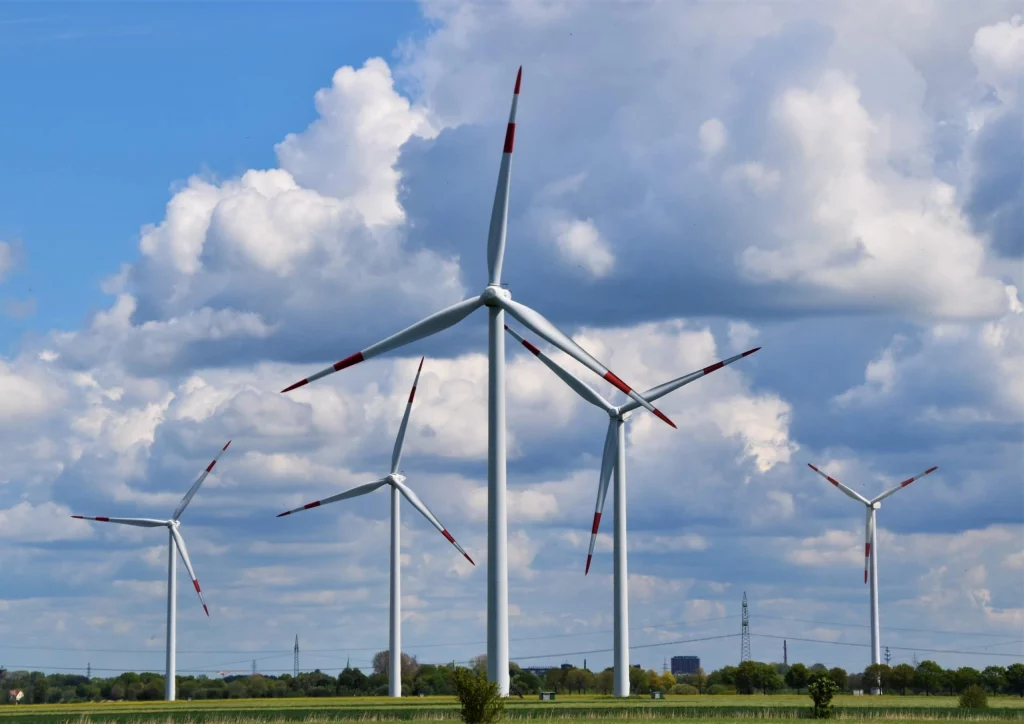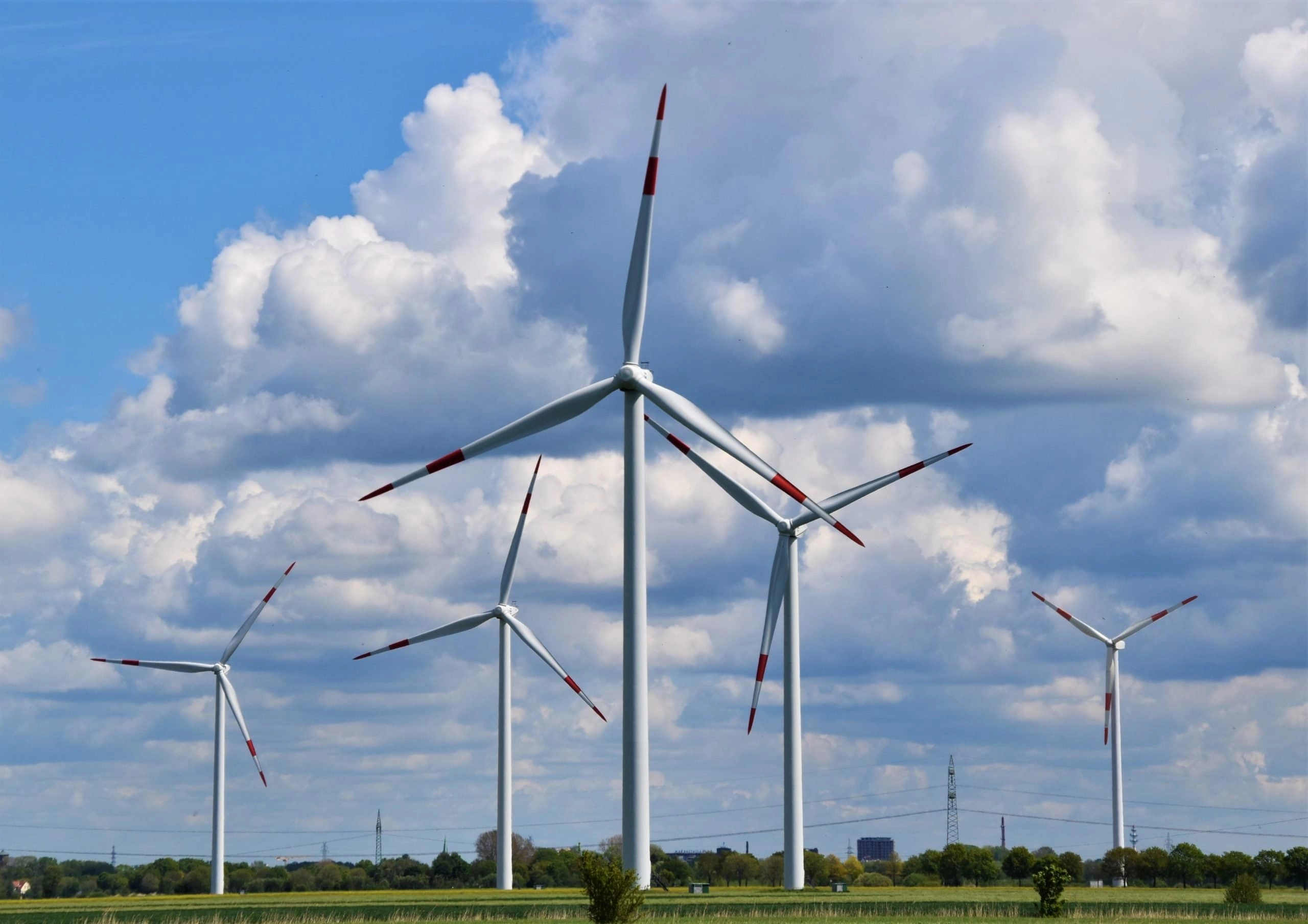With demands for electricity on the rise, wind turbines are becoming a popular form of generating power.
The United States is becoming increasingly dependent on electrical power. Without electricity, our nation would be thrown into utter chaos and disorganization. This horrific possibility was seen in Venezuela in March 2019 during a five day nationwide power blackout (3). Simply put, there was not enough electricity to sustain the country, as the government had underestimated the amount of power needed. While some may argue that our society is functional without electricity, we definitely are not. In the case of the Venezuelan blackout, an estimated 26 people died in the country’s hospitals: individuals with kidney failure lacked access to vital dialysis treatment and gunshot victims could not get required medical attention (3). With electricity being an essential resource in this day and age, it is necessary that we find multiple ways to harvest it. For good reason, wind turbines have become one of the most popular forms of generating electricity (1). Not only are they efficient, but they work in ways that do not exploit our environment or further put us at risk (2).
This surge in popularity amongst wind turbines is seen most commonly in the middle of the United States, as it is often windy in those areas (1). Heavy winds in the middle of the nation are created due to the geography of the US, with winds coming down from Canada and up from the Gulf of Mexico (1). Additionally, the flat land allows large gusts of wind to carry for miles on end. Not only are wind turbines more environmentally friendly in comparison to burning fossil fuels, but they are an economic plus for many of the nearby farmers (1). In addition to selling crops, many farmers place wind turbines on their land and harvest the energy they produce (1). They make an extra profit on the generated power while simultaneously saving money on purchasing energy for themselves (1). Oftentimes, these farmers will make more money off of energy than they do off of crops (1).

Wind turbines’ blades are blown by oncoming gusts of wind, creating kinetic energy. Kinetic energy is then harvested and used to generate electricity, or wind power (2). These blades are attached to a rotor, which spins a generator to create electricity (2). There are two types of wind turbines, each structured differently to optimize the amount of energy that can be produced. Horizontal-axis wind turbines (HAWTs) resemble an airplane propeller, with two or three thin, long blades. On the other hand, vertical-axis wind turbines (VAWTs) imitate beaters used in an electric mixer, as they have wider, shorter curved blades. Small, individual wind turbines can produce 100 kilowatts of power, enough energy to power a home (2). Larger turbines reside on towers that can be as tall as 260 feet (2). These turbines have rotor blades that extend approximately 130 feet and can generate 1.8 megawatts of power (2). To put this in perspective, one megawatt of power generates enough electricity to meet the needs of 164 US homes (3). Even larger turbines can generate up to 9.5 megawatts of power, with rotor blades more than 531 feet long (2). Once generated, the electricity can be used, connected to an electrical grid, or stored for future use (2).

According to the U.S. Geological Survey, there are 57,000 wind turbines in the nation both on land and offshore (2). While wind turbines are often standalone structures, they can also be clustered together in what is known as a wind farm (2). One turbine can only produce so much power, but a whole wind farm can generate far more electricity, enough to power thousands of homes (2). Wind farms are most commonly located on top of a mountain or in an otherwise windy place to take advantage of strong, natural winds (2). The largest offshore wind farm in the world is called the Walney Extension (2). Located in the Irish Sea approximately 11 miles west of the northwest coast of England, the Walney Extension covers a phenomenal area of 56 square miles (2). This amount of land is larger than the city of San Francisco, California, or the island of Manhattan in New York. The grid of 87 wind turbines stands 640 feet tall, larger than most other wind turbines in the world. The Walney Extension has the potential to generate 659 megawatts of power, easily supplying 600,000 homes in the United Kingdom(2).
Wind turbines will likely be the backbone of the future for not only our nation, but the globe. Without proper electricity levels, the citizens of each and every town, city, and country on earth will be put at risk. We have created a society that relies on electric power, and the needs of the people must be met. Wind turbines are the most economically and environmentally friendly way to harvest this needed energy. There is no reason why we should step off the path we are on now, as wind turbines are clearly our most efficient option to approaching energy production.
Bibliography
- Davis, K. (2021, November, 5). What’s Next For Kansas After 20 Years Of Wind Power? ScienceFriday. Retrieved from https://www.sciencefriday.com/segments/sos-20-years-of-wind-power-in-kansas/
- National Geographic Society (2012, November, 12). Wind Energy. National Geographic. Retrieved from https://www.nationalgeographic.org/encyclopedia/wind-energy/
- Gray, R. (2019, October, 24). What would happen in an apocalyptic blackout? BBC. Retrieved from https://www.bbc.com/future/article/20191023-what-would-happen-in-an-apocalyptic-blackout
Images

